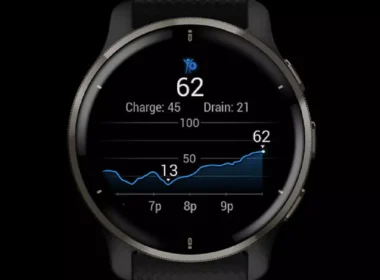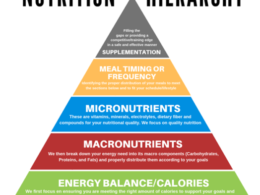Visceral adipose tissue, or VAT, is a type of adipose tissue that accumulates around the abdominal organs. Unlike subcutaneous adipose tissue, located beneath the skin, visceral adipose tissue is embedded within the abdominal wall and surrounded by loose connective tissue.
According to a PubMed abstract, the composition of visceral adipose tissue differs from other adipose depots in terms of its cellular and molecular characteristics. It is associated with metabolic disorders such as insulin resistance and type 2 diabetes.
The accumulation of VAT can lead to an increased risk for these disorders due to its proximity to vital organs such as the liver, pancreas, and intestines. Research has shown that VAT predicts metabolic health better than subcutaneous fat.
Adoptive transfer studies have also revealed that VAT plays a key role in regulating immune responses throughout the body. This highlights the importance of understanding how VAT impacts metabolic health and its influence on overall immune function.
Table of Contents
Understanding Visceral Adipose Tissue and Its Symptoms
Adipose Tissue Inflammation: Understanding the Symptoms and Risks
Visceral adipose tissue is fat that accumulates around the organs in the abdominal cavity. While some visceral adipose tissue is normal for physiological functions, excessive amounts can lead to health problems such as obesity, metabolic syndrome, and cardiovascular disease. Generally speaking, low visceral adipose tissue (VAT) is considered healthy.
One symptom of visceral adipose tissue is inflammation, which can cause chronic diseases such as heart disease, diabetes, and cancer.
Adipose tissue inflammation occurs when the immune system responds to excess fat tissue by releasing inflammatory molecules. The resulting state of chronic inflammation can lead to insulin resistance, impaired glucose metabolism, and other metabolic abnormalities associated with obesity-related diseases.
Symptoms of Adipose Tissue Inflammation
The symptoms of adipose tissue inflammation are not always obvious. However, several signs may indicate its presence:
- Abdominal pain: Pain in the abdomen may indicate inflammation in the visceral adipose tissue.
- Fatigue: Chronic fatigue or tiredness may result from systemic inflammation caused by excess visceral fat.
- High blood pressure: Hypertension is often associated with obesity and metabolic syndrome.
- High cholesterol levels: Elevated LDL (low-density lipoprotein) cholesterol levels are common in people with excess visceral fat.
- Insulin resistance occurs when cells become less responsive to insulin’s effects on glucose metabolism.
- Type 2 diabetes: Obesity-related type 2 diabetes is characterized by insulin resistance and high blood sugar levels.
- Sleep apnea: Obstructive sleep apnea is more common in people with excess visceral fat due to increased pressure on the airways during sleep.
- Joint pain: Excess weight can put additional stress on joints leading to osteoarthritis and joint pain.
- Skin problems: Skin conditions like acanthosis nigricans, which is characterized by dark patches of skin around the neck and armpits, are often associated with insulin resistance.
- Depression: Obesity and metabolic syndrome have been linked to depression.
Risks Associated with Adipose Tissue Inflammation
Adipose tissue inflammation can lead to several health problems, including:
- Cardiovascular disease: Chronic inflammation in adipose tissue can increase the risk of heart attack and stroke
- Type 2 diabetes: Insulin resistance caused by adipose tissue inflammation can lead to type 2 diabetes.
- Cancer: Chronic inflammation has been linked to an increased risk of certain types of cancer, including breast, colon, and pancreatic cancers.
- Metabolic syndrome: Adipose tissue inflammation is one of the key components of metabolic syndrome, which includes high blood pressure, high cholesterol levels, insulin resistance, and abdominal obesity.
- Non-alcoholic fatty liver disease (NAFLD): NAFLD is a condition where excess fat accumulates in the liver due to insulin resistance caused by adipose tissue inflammation.
Preventing Adipose Tissue Inflammation
Preventing adipose tissue inflammation requires lifestyle changes that promote weight loss and healthy habits, such as: eating a balanced diet with plenty of fruits and vegetables, regular exercise, avoiding sugary or processed foods, and overconsuming alcohol.
Getting rid of visceral adipose tissue requires getting rid of factors contributing to its growth. These factors include stress and lack of sleep.
Measuring Visceral Adipose Tissue: Preferred Methods and Techniques
Measuring visceral adiposity is crucial in assessing an individual’s risk for metabolic disorders and cardiovascular diseases.

Waist circumference measurement is one of the most widely used anthropometric measurements for estimating VAT. The World Health Organization defines abdominal obesity as a waist circumference greater than 102 cm in men and greater than 88 cm in women. However, this definition may not apply to all populations due to differences in body composition and fat distribution.
BMI is another standard anthropometric measure used to estimate VAT. BMI is calculated by dividing weight in kilograms by height in meters squared (kg/m²). A BMI between 25-29.9 kg/m² indicates overweight status, while a BMI over 30 kg/m² suggests obesity. However, BMI does not differentiate between fat mass and lean mass, which can lead to inaccurate estimations of VAT.
Dual-energy X-ray absorptiometry (DXA) scan is a non-invasive technique that uses low-dose radiation to measure bone mineral density and body composition. DXA can accurately measure VAT and subcutaneous adipose tissue (SAT) in different body regions.
Differences Between Visceral and Subcutaneous Fat
Subcutaneous Fat vs. Visceral Fat: What’s the Difference?
Not all fat is created equal. Subcutaneous and visceral fat are two types of body fat that differ in location, function, and health implications.
Subcutaneous fat is located just beneath the skin, while visceral fat is found deep within the abdominal cavity. While both types of fat can accumulate with age and weight gain, visceral fat tends to increase rapidly and in more significant amounts.
Subcutaneous Fat: The Protective Layer
Subcutaneous fat serves as a protective layer for the body. It helps regulate body temperature, cushions organs, and bones from injury, and stores energy for future use. This type of fat is typically less harmful to health than visceral fat.
Unlike visceral fat, subcutaneous fat does not release hormones or other substances that affect the body’s functioning. However, excess subcutaneous fat can lead to cosmetic concerns such as cellulite or a “muffin top” appearance.

Measuring subcutaneous fat using skinfold calipers or imaging techniques like DXA, MRI, or CT scans. These methods estimate total body composition but do not differentiate between subcutaneous and visceral fats.

Visceral Fat: The Metabolically Active Fat
Visceral fat surrounds vital organs such as the liver, pancreas, and intestines. Unlike subcutaneous fat, this type of adipose tissue is metabolically active – meaning it can release hormones and other substances that affect the body’s functioning.
Excess visceral fat has been linked to various health problems, including insulin resistance, type 2 diabetes, heart disease, stroke, and certain cancers. Studies have shown that even people with normal BMIs (body mass indexes) but high levels of visceral adipose tissue are at increased risk for these conditions.
Losing Weight and Reducing Fat
While both types of fat can be reduced through diet and exercise, targeting visceral fat specifically may require more intensive lifestyle changes.
Combining aerobic exercise, strength training (concurrent training), and a healthy diet can help reduce body fat overall. However, studies have shown that high-intensity interval training (HIIT) may be particularly effective at reducing visceral fat.
Visceral Fat and Diet
A healthy diet can help reduce visceral fat deposition
A healthy diet rich in fruits, vegetables, whole grains, lean proteins, and healthy fats can help reduce visceral adiposity. These foods are nutrient-dense and low in calories compared to processed foods with added sugars and unhealthy fats. A diet rich in these foods can help individuals maintain a healthy weight and reduce belly fat.
Avoiding processed foods, sugary drinks, and excessive alcohol consumption can also help reduce belly fat. Processed foods are often high in calories and unhealthy fats, contributing to weight gain. Sugary drinks contain empty calories that do not provide nutrients but contribute to weight gain. Excessive alcohol consumption has been linked to an increase in visceral adiposity.
Visceral fat range varies among individuals.
The amount of visceral fat in the body varies among individuals. However, a waist circumference of more than 40 inches for men and 35 inches for women is considered in the high visceral fat range. This measurement indicates that too much visceral adipose tissue may be around the organs.
It’s important to note that measuring waist circumference alone cannot determine how much visceral fat an individual has; it only provides an estimate based on population averages. Other methods, such as DXA, MRI or CT scans, are required for accurate measurements.
To measure visceral adipose tissue, a DXA scan is commonly used. For men, a healthy range is typically less than 1 pound, while for women, it is less than 0.8 pounds.
Total body fat reduction can lead to a decrease in visceral fat
While spot reduction of belly fat is impossible, reducing total body fat through a healthy diet and regular exercise can decrease visceral fat volume. This can improve overall health and reduce the risk of chronic diseases associated with visceral obesity.
Concurrent training is effective in reducing total body fat. Aerobic exercise helps burn calories, while strength training helps build muscle mass, which can increase metabolism and help burn more calories at rest.
Foods That Cause Visceral Fat and Its Causes
High sugar intake:
Consuming sugary foods and drinks can increase visceral fat as excess sugar is stored in the liver and converted into fat. This process is known as lipogenesis, where the liver converts excess glucose into fatty acids, which are then transported to adipose tissue for storage. The more sugar you consume, the more likely you are to develop visceral fat.
Studies have shown that individuals who consume high amounts of added sugars have a higher risk of developing obesity, type 2 diabetes, and cardiovascular disease. These health conditions are closely linked to visceral fat accumulation.

Processed foods:
Processed foods are often high in calories, unhealthy fats, and added sugars, which can contribute to visceral fat accumulation. These foods are typically low in fiber and other essential nutrients that promote satiety and help regulate blood sugar levels.
A diet consisting mainly of processed foods has been shown to increase inflammation in the body, leading to insulin resistance and weight gain. Inflammation also plays a crucial role in developing chronic diseases such as heart disease, cancer, and stroke.
Trans fats:
Trans fats, commonly found in fried and processed foods, have been linked to increased visceral fat as they promote inflammation and insulin resistance. Trans fats disrupt normal metabolic processes by disrupting cell membranes’ structure and function.
Research has shown that trans fats contribute to weight gain and increase the risk of developing heart disease by raising LDL (bad) cholesterol levels while lowering HDL (good) cholesterol levels.
Alcohol consumption:
Excessive alcohol consumption can accumulate visceral fat as the liver prioritizes breaking down alcohol over metabolizing fat. Alcohol is metabolized differently from other macronutrients like carbohydrates or proteins because it cannot be stored in the body.
When alcohol is consumed regularly or excessively over time, it can cause damage to various organs, such as the liver or pancreas. This damage can lead to insulin resistance, inflammation, and an increased risk of developing obesity and other chronic diseases.

Sedentary lifestyle:
A lack of physical activity can contribute to the development of visceral fat as unused calories are stored as fat, particularly around the abdominal area. This type of fat is known as central obesity or apple-shaped body type.
Studies have shown that individuals who engage in regular physical activity have lower visceral fat levels than those who do not. Exercise helps burn calories and promotes muscle growth, which increases metabolism and reduces the risk of developing chronic diseases.
Lifestyle that affects the increase in Visceral Fat
Sedentary Lifestyle
A sedentary lifestyle and lack of physical activity are significant factors that increase the risk of developing visceral fat. Physical activity has been shown to reduce overall body fat, including visceral fat. A study conducted by Harvard Health showed that individuals who engaged in regular exercise had lower visceral fat levels than those who did not exercise regularly.
Genetics
Genetics plays a role in determining the phenotype of an individual, which can affect the distribution and increase of visceral fat. Studies have shown that certain genetic variations are associated with increased levels of visceral adipose tissue. However, genetics alone cannot explain all excessive visceral fat accumulation cases.
Stress
Other factors, such as stress, poor sleep quality, and smoking, can also increase visceral fat. Chronic stress has been linked to increased cortisol levels, which can promote weight gain and lead to an accumulation of visceral adipose tissue. Poor sleep quality has also been associated with an increased risk of developing obesity and metabolic disorders such as diabetes.
Smoking
Smoking has been linked to increased abdominal obesity and higher intra-abdominal adiposity (visceral adipose tissue) levels. A study published in The Journal of Clinical Endocrinology & Metabolism found that smokers had significantly higher levels of intra-abdominal adipose tissue than non-smokers.
Health Risks of Visceral Fat and When to Seek Medical Attention
Health Risks Associated with Excess Visceral Fat
Visceral fat is metabolically active and produces hormones that can affect various body functions. Excessive accumulation of visceral fat can lead to inflammation, insulin resistance, oxidative stress, hormonal imbalances, and other metabolic abnormalities that contribute to developing chronic diseases.
Type 2 Diabetes: Insulin resistance is a key factor in developing type 2 diabetes. Visceral fat produces cytokines that interfere with insulin signaling pathways and impair glucose uptake by muscle cells. This leads to elevated blood glucose levels over time, damaging organs such as kidneys, eyes, nerves, and blood vessels.
Heart Disease: High triglyceride levels (blood fat) produced by visceral fat can increase the risk of heart disease by contributing to plaque buildup in arteries. Plaque buildup narrows arteries and restricts blood flow to vital organs such as heart muscles leading to chest pain (angina), heart attack or stroke.
Certain Cancers: Excess visceral fat has been linked to an increased risk of certain types of cancer, such as breast, colon, and pancreatic cancers. The exact mechanism is unclear, but visceral fat is believed to produce hormones and growth factors that promote tumor growth.
When to Seek Medical Attention
If you experience unexplained weight gain, fatigue, or difficulty breathing, it may be a sign of excess visceral fat, and you should seek medical attention. Other symptoms may include high blood pressure, high blood sugar levels (hyperglycemia), or abnormal lipid profiles (dyslipidemia). These symptoms can indicate underlying metabolic abnormalities that require prompt diagnosis and treatment.
How to Reduce Visceral Body Fat: Tips and Tricks
The Best Way to Reduce Visceral Body Fat Is Through a Combination of Healthy Eating and Regular Exercise
While there are no quick fixes or magic pills, the best way to do so is through a combination of healthy eating and regular exercise.
Healthy eating involves consuming whole foods rich in nutrients while avoiding processed foods high in sugar, salt, and unhealthy fats. It’s also important to watch portion sizes and limit alcohol consumption, as excess alcohol intake can contribute to belly fat accumulation.
Regular exercise helps burn calories and reduce overall body fat, including visceral fat. Aim for at least 150 minutes of moderate-intensity aerobic activity per week, such as brisk walking or cycling. Additionally, focus on total body workouts that engage the trunk, such as planks and squats.
Focus on Total Body Workouts That Engage the Trunk
Total body workouts that engage the trunk muscles effectively reduce visceral body fat because they require more energy than isolated exercises like bicep curls or leg extensions. The plank exercise is an excellent example of a total-body workout that engages multiple muscle groups, including the core, glutes, and shoulders. To perform a plank, start in a push-up position with your forearms on the ground and hold for as long as possible.
 Squats are another effective total body exercise that engages the trunk muscles. To perform a squat, stand with your feet shoulder-width apart and lower your hips as if sitting in a chair. Keep your knees behind your toes and engage your core muscles throughout the movement.
Squats are another effective total body exercise that engages the trunk muscles. To perform a squat, stand with your feet shoulder-width apart and lower your hips as if sitting in a chair. Keep your knees behind your toes and engage your core muscles throughout the movement.
Use Tools Like a Food Diary or Fitness Tracker to Stay Accountable and Motivated
Staying accountable and motivated is key to achieving any goal, including reducing visceral body fat. One way to stay accountable is using a food diary or fitness tracker.
A food diary helps you track what you eat throughout the day. By writing down everything you eat, you become more aware of your eating habits which can help you make healthier choices over time. If you’re looking for an app-based, our favorite is Macro Factor.
A fitness tracker helps monitor physical activity levels, such as steps taken per day or calories burned during exercise. Seeing progress over time can motivate and encourage continued effort toward reducing visceral body fat.
Aim for Specific Numbers to Achieve Your Goals
Setting specific goals with numbers attached can help increase motivation toward reducing visceral body fat. For example, aim to lose 1-2 pounds per week or increase daily steps by 500 each week until reaching 10,000 steps per day.
Having specific goals directs toward achieving success while providing measurable outcomes for progress-tracking purposes.
Intermittent Fasting and Visceral Fat Reduction
Intermittent fasting has become increasingly popular to improve overall health and reduce body weight. However, its benefits extend beyond just weight loss. Intermittent fasting has been shown to improve metabolic parameters, including insulin sensitivity and related insulin resistance, which can reduce visceral adipose tissue.
Leptin Levels
Studies have found that intermittent fasting can also reduce leptin levels, a hormone that regulates appetite and metabolism. Leptin resistance is common among people with obesity and may contribute to the development of visceral fat. By reducing leptin levels through intermittent fasting, individuals may be able to decrease their risk of developing visceral fat.
Microbial dysbiosis
In addition to improving metabolic parameters and reducing leptin levels, intermittent fasting has been shown to improve microbial dysbiosis. Microbial dysbiosis is a condition where there is an imbalance of gut bacteria that can lead to metabolic disturbances and contribute to the development of visceral fat.
VAT Reduction
Several studies have found that intermittent fasting can lead to a reduction in visceral adipose tissue. For example, a study published in the Proceedings of the National Academy of Sciences USA by Nakamura et al. found that mice fed an alternate-day fasting diet had significantly reduced amounts of visceral adipose tissue compared with mice fed ad libitum (unrestricted) diets.
Final Thoughts on Visceral Adipose Tissue
The health risks associated with excessive amounts of visceral adipose tissue are numerous, and individuals should seek medical attention if they experience any symptoms. Symptoms include high blood pressure, high cholesterol levels, and an increased waist circumference.
Reducing visceral adipose tissue can be challenging, but it is achievable through diet and exercise. Intermittent fasting has also been shown to reduce visceral fat by restricting calorie intake during specific periods.











